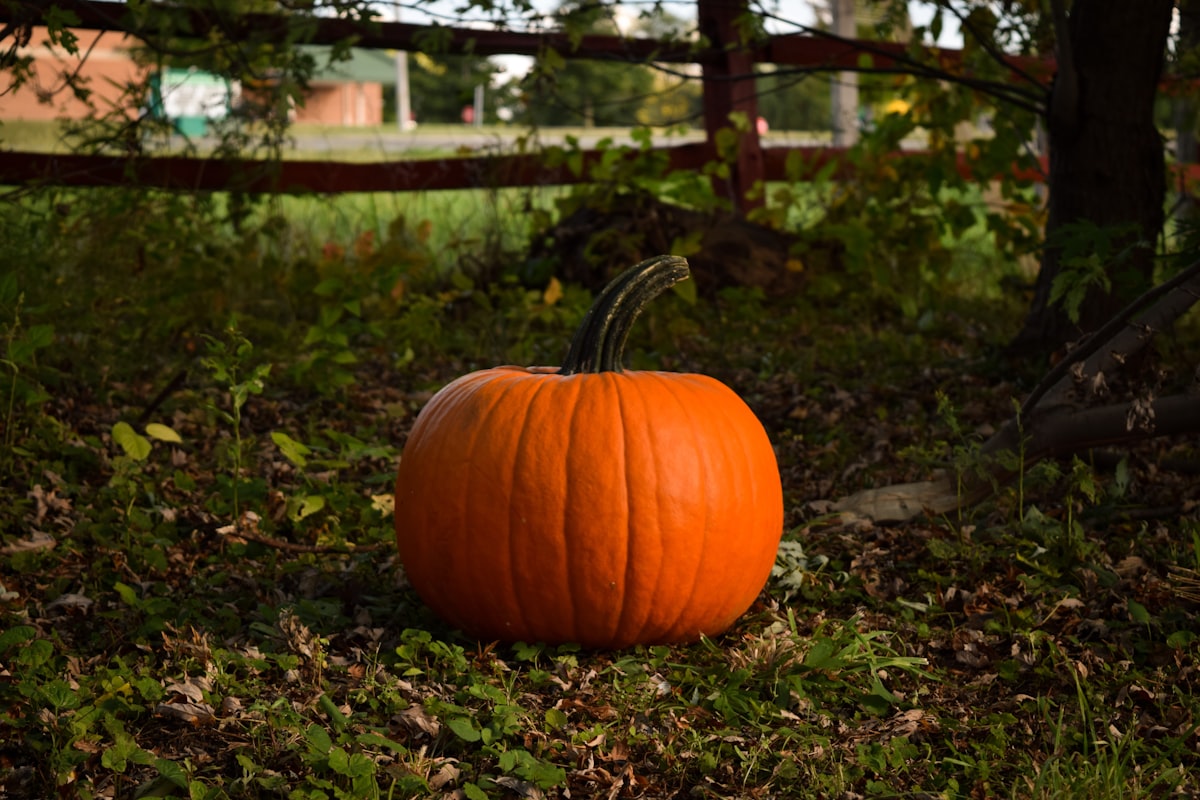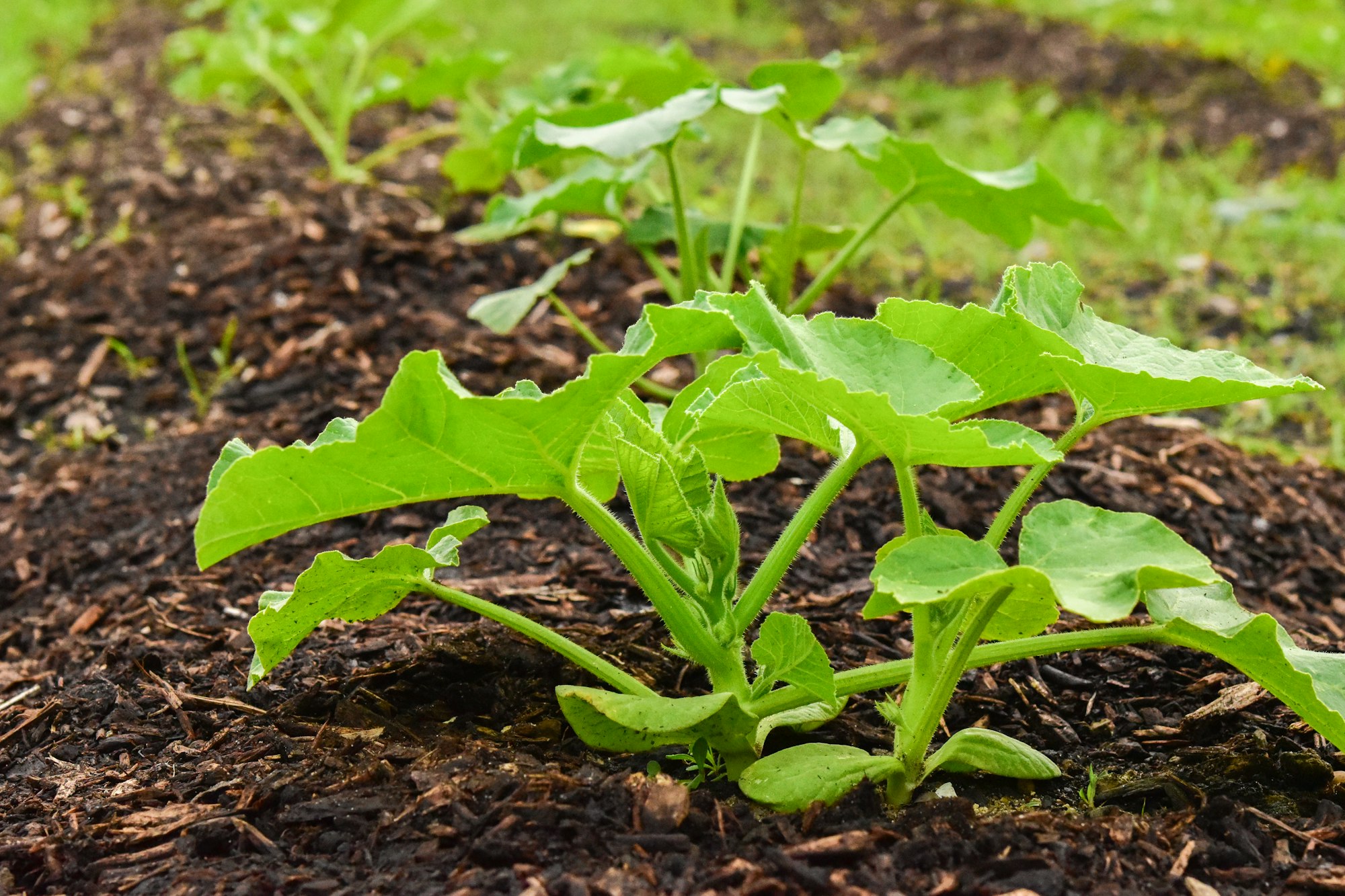How to Grow Pumpkins
Growing pumpkins is a fun and rewarding activity that gardeners of all levels can enjoy. Whether you're looking to carve a spooky jack-o-lantern for Halloween or bake a delicious pumpkin pie for Thanksgiving, learning how to grow pumpkins is a great way to get started.

Table of Contents
Selecting the ideal location is crucial as you begin your pumpkin gardening journey. Ensure the chosen area receives at least six hours of full sun daily and offers ample space for growth.
Your garden's soil is equally important and should be well-draining and rich in organic matter.
To enhance fertility, consider amending the soil with compost or aged manure before planting your pumpkins.
Understanding Pumpkins
Pumpkins, a fruit in the gourd family, come in various colors like orange, white, green, and even blue.
To grow pumpkins, plant seeds directly in the ground or indoors before transplanting, ensuring warm soil and plenty of sunlight.
Remember that pumpkins need a lot of nutrients and water, so fertilize your soil periodically and maintain proper irrigation.
Be mindful of the space requirements, as different pumpkin varieties may need ample room to thrive.
By understanding the essentials of pumpkin cultivation, you can achieve a bountiful harvest, enjoying these versatile vegetables for pumpkin carving or cooking purposes.
Selecting the Ideal Soil
The Right Soil Composition
Choose a sandy loam soil for growing pumpkins, as it offers good drainage while retaining sufficient moisture.
Add compost or other organic matter to improve drainage if you have heavy clay soil.
Optimal Soil pH
Pumpkins prefer slightly acidic to neutral soil, with a pH between 6.0 and 7.0. To adjust your soil's pH, use lime (for acidic soil) or sulfur (for alkaline soil).
Ensuring Proper Nutrient Levels
Incorporate compost or well-rotted manure into the soil to enhance nutrient content before planting.
Use a balanced 10-10-10 or 5-10-10 fertilizer for additional nutrition, and monitor your plants for nutrient deficiencies during growth to make necessary adjustments.
Planting Pumpkins
Picking the Ideal Seeds
Search for pumpkin seeds specifically labeled as such and ensure their freshness. Acquire them from a reliable garden center or an online source.
Sprouting Seeds
Begin by placing seeds in a damp paper towel inside a plastic bag. Store the bag in a dark, warm location and check for sprouts every few days.
Once sprouted, they're ready for planting.
Moving Sprouted Seeds
After sprouting, fill a pot with soil and create a small hole in the center. Gently position the germinated seed into the hole and cover it with soil.
Water the plant and place it where it will receive sunlight.
Proper Spacing and Row Arrangement
Pumpkins require ample space, so plant them in rows at least 6 feet apart. Within these rows, allow 2-3 feet of space between each pumpkin plant to promote healthy growth.

Caring for Pumpkin Plants
Watering
Water your pumpkin plants deeply once a week, increasing frequency during hot, dry spells. Apply water to the soil near the plant base and use mulch to retain moisture.
Fertilizing
Enrich the soil with compost or well-rotted manure before planting. Fertilize with a balanced formula every 2-3 weeks, adhering to package instructions to prevent over-fertilization.
Weeding
Remove weeds by hand-pulling or using a hoe, taking care not to disturb pumpkin roots. Employ mulch to suppress weed growth and preserve soil moisture.
Pruning
With pruning shears, eliminate dead or diseased foliage and unproductive vines. Avoid excessive removal to maintain the plant's energy for healthy growth and fruit production.
Grasping Pumpkin Growth
The Significance of Vines and Roots
Pumpkin vines are essential for growth and can extend up to 20 feet. They supply the pumpkin with nutrients and water and anchor it to the ground.
Healthy root growth is crucial for absorbing nutrients and water and anchoring the plant, so using well-drained and nutrient-rich soil is advised.
Differentiating Male and Female Flowers
Pumpkin plants exhibit both male and female flowers.
Male flowers generate pollen and appear first, while female flowers appear later, with a small undeveloped fruit at their base.
Since not every female flower becomes a pumpkin, an adequate balance of male and female flowers is vital for effective pollination.
Examining the Pollination Process
Pollination involves transferring male pollen to female flowers, which wind, bees, and other pollinators could facilitate.
To attract bees to your pumpkin plants, grow flowers nearby to provide food and place a shallow water dish as a water source.
Familiarity with vines, roots, male and female flowers, and pollination can contribute to a thriving pumpkin harvest.
Nurturing Pumpkins in Various Environments
Growing in Containers
To grow pumpkins in limited spaces, use containers in sunny spots with at least six hours of full sun daily.
Select a container at least 20 inches in diameter and 18 inches deep, and plant your seedlings in well-draining potting soil.
Maintain consistently moist soil and use a balanced fertilizer every two weeks.
Cultivating in Your Backyard
For larger spaces, backyard pumpkin growing is ideal. Find a sunny area with at least six hours of daily sunlight.
Once the last frost has passed and the soil temperature is above 60°F, plant your seedlings.
Allow sufficient growth space by planting at least four feet apart in rows six to eight feet apart.
Consistently moist soil and biweekly balanced fertilizing yield bountiful pumpkins in the fall.
Dealing with Pests and Diseases
Spotting Pumpkin Pests
To tackle pests, first identify them. Watch for squash bugs, aphids, and cucumber beetles, which commonly prey on pumpkin plants.
Applying Insecticides
For severe pest infestations, use an insecticide. Choose an eco-friendly option and apply it using a spray bottle.
Follow label instructions and wear protective gear.
Warding Off Diseases
Disease prevention is crucial for healthy pumpkins. Provide ample water, sunlight, and space to combat fungi and bacteria. Consider fungicides to control disease spread.
Harvesting and Storing Pumpkins
When to Gather Pumpkins
Depending on the variety, pumpkins are typically ready for harvest 75 and 115 days after planting. Harvest before the first autumn frost, ensuring the skin is hard and the stem fully developed.
Storing Pumpkins Safely
Cure pumpkins in a warm, dry place with good air circulation for about two weeks. After curing, keep them in a cool, dry location, with temperatures between 50 and 55 degrees Fahrenheit, and check regularly for signs of rot or decay.
Conclusion
Successfully growing pumpkins involves selecting an ideal location with sunlight and well-draining soil while providing ample water and nutrients.
Properly spacing seeds and planting them at the right depth is also essential. Remain vigilant about pests and diseases, addressing them promptly for a healthy pumpkin patch.
Harvest mature pumpkins when the rind is hard and has a dull, matte appearance. Cut the stem with a sharp tool, leaving a few inches attached.
Remember to store the pumpkins in a cool, dry area with good air circulation, inspecting them regularly to ensure they remain free from decay.
By adhering to these guidelines, your pumpkin gardening endeavors can yield a bountiful harvest of tasty, homegrown pumpkins.
Frequently Asked Questions
How much space do pumpkins need to grow?
Pumpkin plants need ample space to grow, so make sure you leave 2 to 4 feet between each plant. This spacing ensures that they have enough room for their sprawling vines and large leaves.
How many pumpkins per plant can you expect?
The number of pumpkins one plant can produce varies, but on average, you can expect to harvest 2 to 5 pumpkins per plant. Factors such as the variety and growing conditions can impact the overall production.
What is the best soil for growing pumpkins?
Pumpkins thrive in well-draining, loamy soil. If your garden has sandy soil, add extra organic material like compost or manure to retain moisture and provide the nutrients pumpkins need.
How deep should pumpkin seeds be planted?
When planting pumpkin seeds, it's essential to plant them at the correct depth. You should plant the seeds about 1 inch deep in the soil to ensure proper germination and growth.
Is it possible to grow pumpkins vertically?
Yes, you can grow pumpkins vertically! This technique is ideal for small gardens or limited space. Just make sure to offer support for the vines and use a sling for larger pumpkin varieties to prevent the fruit from snapping off the vine.
What are some tips for growing pumpkins successfully?
- Choose the right variety of pumpkins for your garden's size and growing season.
- Ensure they have enough sun, at least 6 to 8 hours of direct sunlight per day.
- Water the plants regularly, keeping the soil consistently moist but not waterlogged.
- Feed the pumpkin plants throughout the growing season with a balanced fertilizer or compost application.


